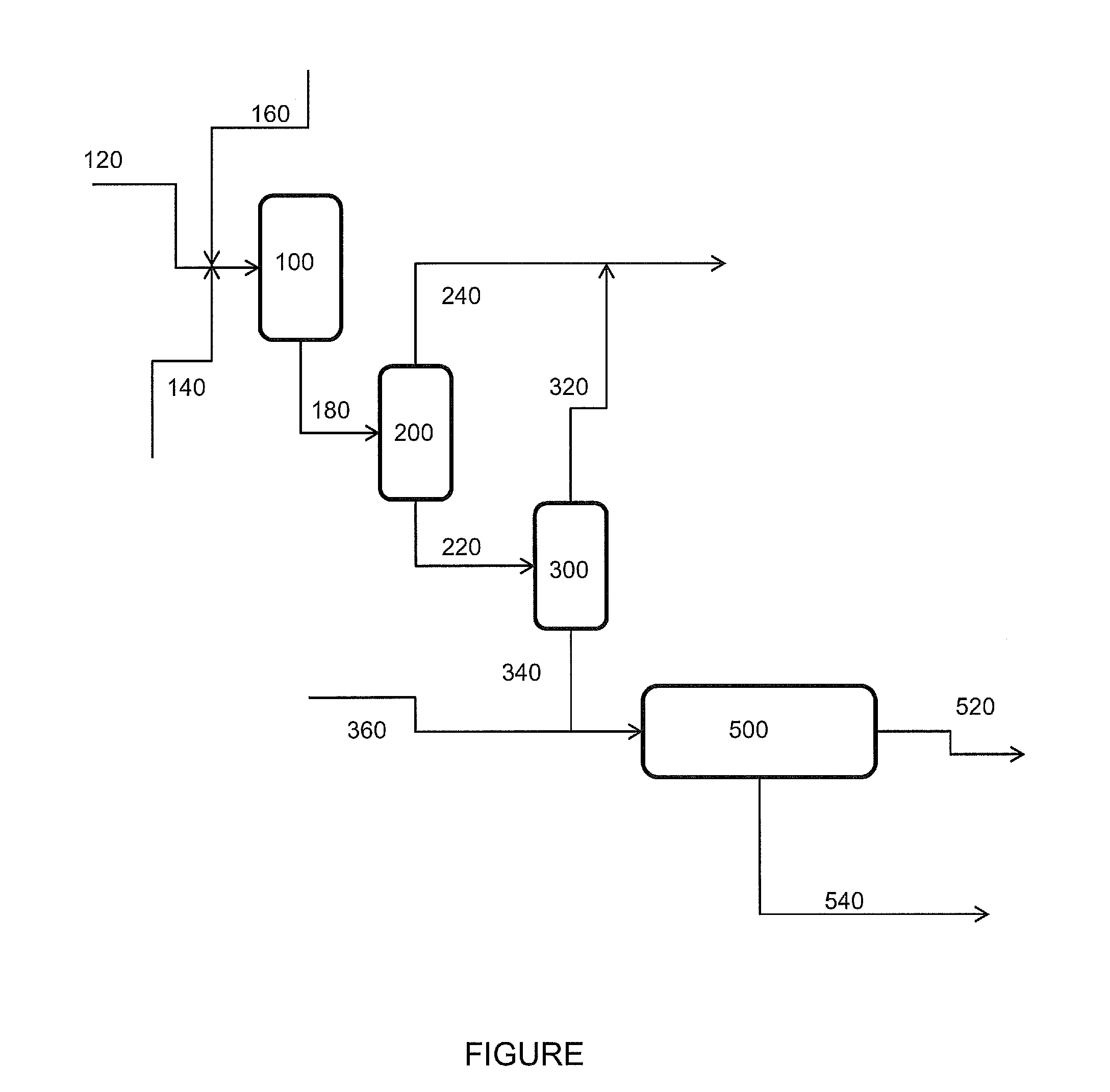Product recovery process in the filtration of polyether polyols
a technology of polyether polyol and product recovery, which is applied in the field of polyether polyol production, can solve the problems of reducing the filtration efficiency of solutions containing gelatinous solids, the need to remove residual catalysts, and blinding cloths, and achieve the effect of reducing the leaching of transition metal species
- Summary
- Abstract
- Description
- Claims
- Application Information
AI Technical Summary
Benefits of technology
Problems solved by technology
Method used
Image
Examples
example 1
[0037]An online turbidity meter, as known to one skilled in the art, is adequate to test the success of the filter operation by ensuring that no solids bypass the filter. The filtered product is analyzed to ensure all the inorganic impurities are removed by measuring the alkalinity number of the product as a primary verification of quality. Rice hull ash is used in a pressure filter to remove alkaline earth and alkali metal salts to below the max 1.0 alkalinity number. The pressure in the filter press is typically increased to 100 to 110 psi to maintain flux through the filter cake over the lifetime of the filter. The polymer product exits the filter below maximum allowed 1.0 alkalinity number.
[0038]Table 2 shows that the transition metal contamination is significantly lowered with the use of RHA as a filter aid, while maintaining an allowed alkalinity number. The filter material used in this example is 1000-2000 grade Terathane® PTMEG Dryer Feed from INVISTA's LaPorte facility. The...
PUM
| Property | Measurement | Unit |
|---|---|---|
| Fraction | aaaaa | aaaaa |
| Fraction | aaaaa | aaaaa |
| Fraction | aaaaa | aaaaa |
Abstract
Description
Claims
Application Information
 Login to View More
Login to View More - R&D
- Intellectual Property
- Life Sciences
- Materials
- Tech Scout
- Unparalleled Data Quality
- Higher Quality Content
- 60% Fewer Hallucinations
Browse by: Latest US Patents, China's latest patents, Technical Efficacy Thesaurus, Application Domain, Technology Topic, Popular Technical Reports.
© 2025 PatSnap. All rights reserved.Legal|Privacy policy|Modern Slavery Act Transparency Statement|Sitemap|About US| Contact US: help@patsnap.com

